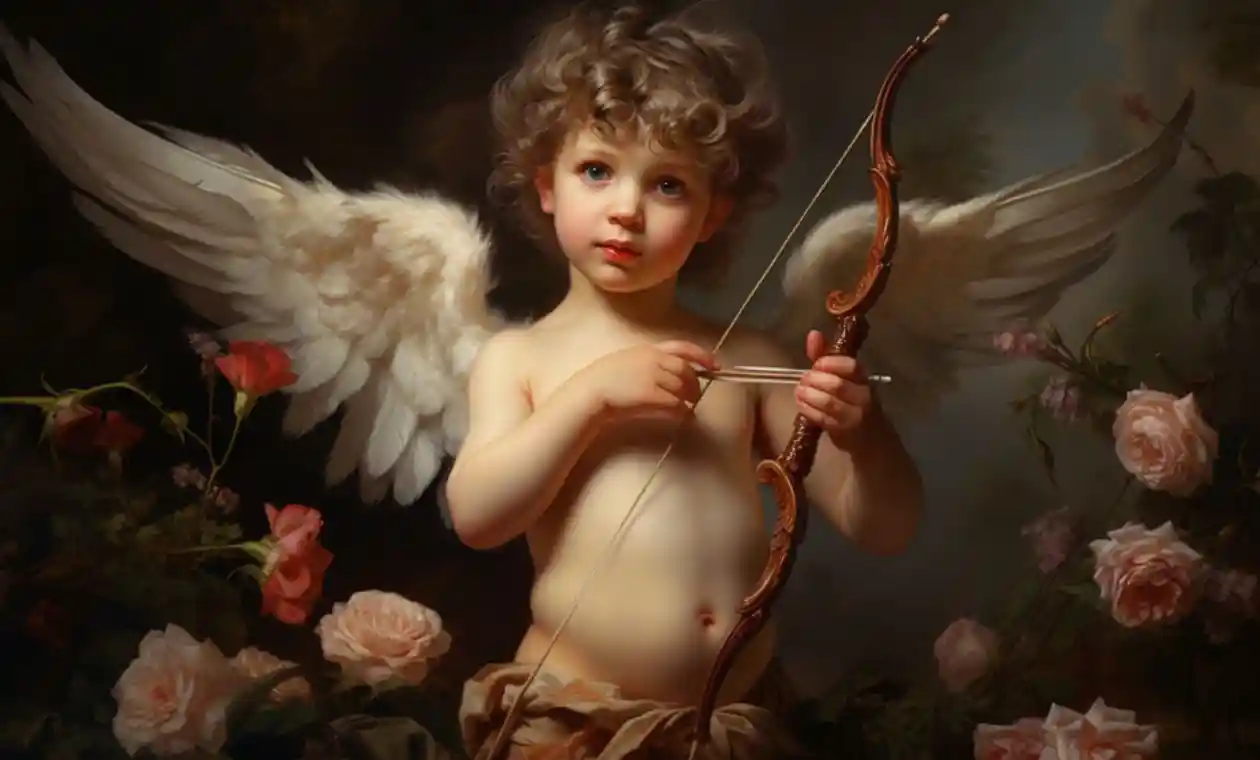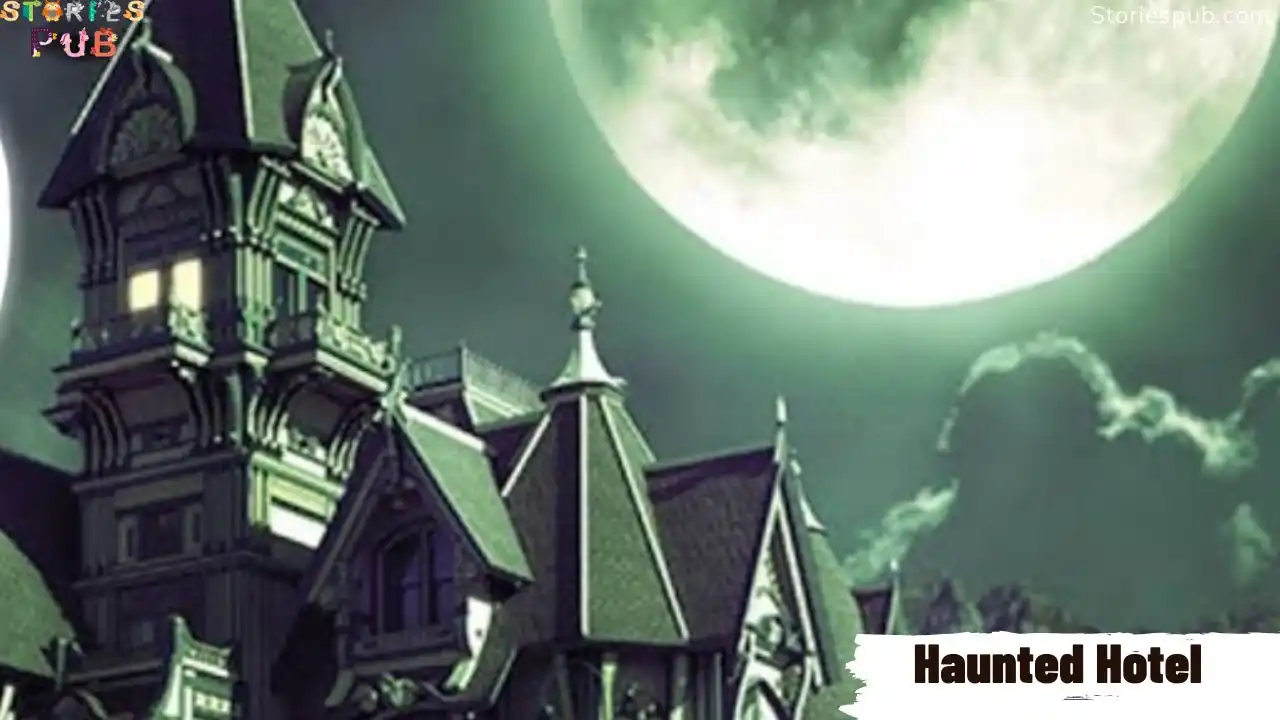Summarize this Article with:
The Enigma of Marlon Brando: A Biography

In the illustrious realm of cinema, where talent and charisma collide, one name eternally shines as a beacon of unparalleled artistry – Marlon Brando. This article embarks on a riveting journey through the life and legacy of a man whose indelible mark on the silver screen remains unmatched. With a career adorned with brilliance and a passion that burned brighter than the Hollywood lights, Marlon Brando’s biography is nothing short of a cinematic masterpiece.
Marlon Brando, a name that reverberates through the annals of film history, needs no introduction. His life’s work reads like a script peppered with groundbreaking performances, challenging conventions, and an unwavering dedication to the craft. From the stage to the silver screen, Brando’s genius knew no bounds.
This article peels back the layers of this enigmatic genius, providing an intimate look at the man behind the roles. It delves deep into the early years that sowed the seeds of his unparalleled talent, tracks his meteoric rise to stardom, and explores the complexities that made him an actor of unprecedented depth.
From the streets of Omaha, Nebraska, to the pinnacle of Hollywood’s elite, Marlon Brando’s life was a tapestry woven with triumphs, trials, and transformative moments. As we navigate his extraordinary journey, we’ll uncover the defining moments that catapulted him into the stratosphere of cinematic legends.
Join us as we unveil the captivating narrative of Marlon Brando’s life – a narrative enriched with passion, power, and the enduring magic of movies.
Personal Life of Marlon Brando
| Aspect | Details |
| Birth Date | 03-Apr-24 |
| Place of Birth | Omaha, Nebraska, United States |
| Family Background | Marlon Brando’s father was Marlon Brando Sr., a pesticide and chemical feed manufacturer. He had two sisters, Jocelyn and Frances. |
| Education | Attended Shattuck Military Academy and later, New York’s American Theatre Wing. |
| Marriages | Marlon Brando was married three times: Anna Kashfi (1957-1959), Movita Castaneda (1960-1962), and Tarita Teriipia (1962-1972). |
| Children | Had several children, including Christian Brando, Miko Castaneda Brando, and Cheyenne Brando. |
| Health Challenges | Marlon Brando struggled with various health issues, including obesity, throughout his life. |
| Activism | He was known for his civil rights activism and support for Native American rights. |
| Hobbies | Brando had interests in Tahitian culture and owned an island in Tahiti. He was also a keen bongo player. |
Professional Achievements of Marlon Brando
| Aspect | Details |
| Breakthrough Role | Stanley Kowalski in “A Streetcar Named Desire” (1951), which earned him his first Academy Award nomination. |
| Oscar Wins | Won Academy Awards for Best Actor for “On the Waterfront” (1954) and “The Godfather” (1972). |
| Method Acting Pioneer | Marlon Brando is credited with popularizing Method acting, a technique that revolutionized the approach to acting. |
| Impact on Cinema | His roles in films like “The Godfather” and “Apocalypse Now” continue to influence actors and filmmakers. |
| Notable Films | Besides “The Godfather,” he starred in classics like “Apocalypse Now,” “Last Tango in Paris,” and “Superman.” |
| Directorial Debut | Brando directed “One-Eyed Jacks” (1961), a Western film in which he also starred. |
| Social Activism | Beyond acting, Brando was known for his activism, particularly in support of civil rights and Native American causes. |
| Legacy | Marlon Brando’s legacy includes redefining acting, challenging norms, and leaving a lasting impact on cinema. |
Early Life: A Glimpse into Marlon Brando’s Roots
Marlon Brando’s journey from the heart of the American Midwest to the dazzling lights of Hollywood is a tale as intriguing as the characters he would later portray. Born on April 3, 1924, in Omaha, Nebraska, Marlon’s early years were marked by the ordinary rhythms of life in a middle-class family.
Marlon’s parents, Marlon Brando Sr. and Dorothy Pennebaker, played pivotal roles in his formative years. His father, a chemical feed manufacturer, and his mother, an artist and theater enthusiast, instilled in him a unique blend of pragmatism and artistic sensibility.
It was from his mother that Marlon inherited his initial exposure to the world of theater and performance. Dorothy’s passion for the arts ignited a creative spark in her young son. Little did they know that this spark would one day ignite the world’s fascination with the young man’s acting prowess.
Marlon Brando’s early education led him to Libertyville High School in Illinois and later, the Shattuck Military Academy in Minnesota. While academic excellence was never his forte, his interest in theater and storytelling began to shine through. It was during these years that he took his first steps into the world of acting, a journey that would change the course of his life forever.
As we delve deeper into Marlon Brando’s early life and family background, we uncover the threads of artistic influence and ordinary roots that would eventually weave the tapestry of an extraordinary career. His upbringing, his family’s love for the arts, and his initial forays into acting serve as the building blocks for the legend that Marlon Brando would become.
Rising Star: Marlon Brando’s Ascent to Stardom
Marlon Brando’s journey from a young, aspiring actor to an international sensation is a narrative marked by audacious talent and groundbreaking performances. His rise to stardom, defined by an unconventional approach to acting, would reshape the cinematic landscape.
Before Marlon Brando became a household name in Hollywood, his talents first found expression on the stage. He honed his craft at the renowned Actors Studio in New York City, a sanctuary for method acting. This period of intensive training allowed Brando to delve deep into the characters he portrayed, an approach that would become his trademark.
It was the role of Stanley Kowalski in Tennessee Williams’ “A Streetcar Named Desire” that catapulted Marlon Brando to stardom. His visceral, emotionally charged portrayal of the brutish yet vulnerable Stanley was a revelation in the world of theater and film. Brando’s performance earned him his first Academy Award nomination and solidified his status as an acting maverick.
Marlon Brando’s success can be attributed, in large part, to his pioneering embrace of method acting. He submerged himself into the psyches of his characters, drawing from his own emotions and experiences to deliver authentic, raw performances. This unorthodox approach set him apart from his contemporaries, making his every role an event to behold.
Brando’s success on Broadway quickly translated into a meteoric rise in Hollywood. His portrayal of Terry Malloy in “On the Waterfront” not only garnered him his first Academy Award but also signaled a turning point in American cinema. Brando’s realistic, emotionally charged acting style set a new standard for actors, challenging traditional norms and forever altering the art of film.
Marlon Brando’s ascent to stardom was marked by a perfect storm of talent, innovation, and a refusal to conform. His ability to delve into the psyche of his characters and extract their deepest emotions redefined acting. As we delve into this phase of his biography, we witness the birth of an acting legend whose influence continues to resonate in the world of cinema.
Marlon Brando’s Iconic Movie Roles: A Trailblazing Career
Marlon Brando’s career is a tapestry woven with iconic roles that left an indelible mark on cinema. His ability to inhabit characters with unparalleled authenticity and emotional depth set a new standard in the film industry. Here, we delve into some of the most notable movie roles that defined his legendary career:
Stanley Kowalski in “A Streetcar Named Desire” (1951):
- Significance: This role was Marlon Brando’s breakthrough, both on Broadway and in Hollywood. His portrayal of the brooding, animalistic Stanley Kowalski was electrifying and earned him his first Academy Award nomination.
- Impact: Brando’s performance in “A Streetcar Named Desire” revolutionized acting by introducing method acting to the mainstream. His raw, emotionally charged portrayal of Stanley set a new standard for authenticity in cinema.
Terry Malloy in “On the Waterfront” (1954):
- Significance: Marlon Brando’s portrayal of Terry Malloy, a dockworker turned whistleblower, won him his first Academy Award for Best Actor. The film itself was a critical and commercial success.
- Impact: “On the Waterfront” showcased Brando’s unparalleled talent for conveying complex emotions. His portrayal of Terry’s inner turmoil and moral conflict is regarded as one of the finest performances in film history.
Don Vito Corleone in “The Godfather” (1972):
- Significance: Brando’s role as the aging mafia patriarch, Don Vito Corleone, earned him his second Academy Award for Best Actor. “The Godfather” is considered one of the greatest films ever made.
- Impact: Brando’s portrayal of Don Corleone is legendary. His gravitas, the use of prosthetics, and his whispery voice made the character an enduring symbol of power and depth in cinema.
Colonel Kurtz in “Apocalypse Now” (1979):
- Significance: Marlon Brando’s role as Colonel Kurtz in this Vietnam War epic was a tour de force. His improvisational acting and enigmatic presence added a layer of mystique to the film.
- Impact: Brando’s performance as Colonel Kurtz is a testament to his ability to mesmerize audiences. His portrayal of a disturbed military officer in the heart of darkness is haunting and unforgettable.
Paul in “Last Tango in Paris” (1972):
- Significance: In this controversial and sexually charged film, Brando played Paul, a grieving widower who engages in an anonymous affair.
- Impact: “Last Tango in Paris” pushed the boundaries of cinema with its explicit content. Brando’s fearless performance was central to the film’s notoriety and acclaim, showcasing his willingness to take risks as an actor.
These roles collectively showcase Marlon Brando’s unparalleled range and influence in shaping the landscape of cinema. His ability to transform into complex, multifaceted characters left an indelible legacy, making him one of the greatest actors in the history of film.
The Godfather and Controversy: Marlon Brando’s Complicated Legacy

Marlon Brando’s portrayal of Don Vito Corleone in the original “The Godfather” is nothing short of legendary, setting a standard in cinema that continues to be celebrated. However, his journey with the iconic role was not without its complexities and controversies. Here, we unravel the enigma surrounding Brando’s Godfather legacy.
Absence in “The Godfather Part II”:
- Why Brando Did Not Appear: Marlon Brando’s absence from “The Godfather Part II” was primarily due to a combination of contractual disputes, financial disagreements, and creative differences with the filmmakers. These issues led to his exclusion from the sequel.
- Impact: Although Brando’s absence in the second installment was a notable absence, the film’s narrative genius allowed it to explore the character’s early life without compromising its integrity. The portrayal of a young Vito Corleone by Robert De Niro won critical acclaim and an Academy Award.
Portrayal of Vito Corleone in the Original “The Godfather” (1972):
- Iconic Performance: Marlon Brando’s interpretation of Don Vito Corleone became a cultural touchstone. His method acting, which involved extensive research and physical transformation, brought the character to life in a way that was unprecedented.
- Controversies and Triumphs: Brando’s portrayal was marked by his unique improvisational approach. His use of cotton balls to alter the sound of his voice and the addition of prosthetic teeth transformed him into the aging mafia patriarch. While these choices were initially met with resistance from the studio, they ultimately contributed to the character’s mystique and authenticity.
Challenges and Criticism:
- Method Acting and Unpredictability: Marlon Brando was known for his method acting, which often involved unpredictable behavior on set. This led to tensions with directors and co-stars, but it also yielded groundbreaking performances.
- Weight Gain: Brando’s decision to gain weight for the role of Vito Corleone was controversial. He believed that the character, a powerful aging mafia boss, should be physically imposing. However, this choice created challenges for the wardrobe department, which had to continually adjust his costumes.
Marlon Brando’s portrayal of Vito Corleone in “The Godfather” not only solidified his status as one of the greatest actors in cinematic history but also introduced a new level of authenticity and complexity to film characters. His challenges and controversies only serve to deepen the appreciation of his enduring legacy in cinema.
Rise to Stardom: Marlon Brando’s Meteoric Ascent
Marlon Brando’s journey from a young, aspiring actor to a global film icon is a story of talent, charisma, and groundbreaking performances that forever altered the landscape of Hollywood. Let’s embark on the journey that led to his meteoric rise to stardom.
Early Stage Career:
- Passion for Acting: Born in 1924 in Omaha, Nebraska, Marlon Brando developed a passion for acting from an early age. His parents recognized his talent and supported his interests, encouraging him to pursue his dreams.
- The Dramatic Workshop: In 1943, Brando enrolled at the renowned New School’s Dramatic Workshop in New York City. There, he studied under the guidance of influential acting coach Stella Adler. This marked the beginning of his formal acting education.
The Breakthrough Role – “A Streetcar Named Desire” (1947):
- Stanley Kowalski: Brando’s breakthrough came when he was cast as Stanley Kowalski in Tennessee Williams’ “A Streetcar Named Desire” on Broadway. His portrayal of the brutish, magnetic Stanley was nothing short of revolutionary.
- Method Acting: Brando’s interpretation of Stanley Kowalski introduced the world to the Method acting technique. His intense commitment to the character, including immersing himself in Stanley’s emotional and physical world, set a new standard for authenticity in acting.
Early Successes on the Silver Screen:
- Film Debut – “The Men” (1950): Brando’s success on Broadway quickly translated to the big screen. In 1950, he made his film debut in “The Men,” where he played a paraplegic war veteran. His performance showcased his versatility and marked the beginning of his cinematic journey.
- “Viva Zapata!” and “Julius Caesar” (1952): Brando continued to impress with his roles in “Viva Zapata!” and “Julius Caesar” in 1952, earning Academy Award nominations for both films. His ability to adapt to various genres and characters demonstrated his immense talent.
Factors Contributing to Stardom:
- Revolutionary Acting Style: Brando’s adoption of Method acting, characterized by intense emotional immersion and authenticity, set him apart from his contemporaries. His willingness to push boundaries and challenge conventions redefined acting in film.
- Iconic Characters: Brando had a knack for choosing complex, memorable characters. His ability to bring these roles to life with nuance and depth resonated with audiences, making him a sought-after leading man.
- Charisma and Magnetism: Brando’s on-screen presence was magnetic. His charisma and raw energy drew viewers in, leaving an indelible impact on their cinematic experience.
Marlon Brando’s journey from the stage to the screen was marked by innovation, talent, and an unwavering commitment to his craft. His breakthrough role in “A Streetcar Named Desire” catapulted him to stardom, and his subsequent successes paved the way for an illustrious career that forever changed the face of Hollywood.
Peak of Popularity: Marlon Brando’s Reign in Hollywood
Marlon Brando’s career reached its zenith during a remarkable period in Hollywood history. His extraordinary talent and groundbreaking performances transformed him into a cultural icon and left an indelible mark on the film industry. Let’s delve into the era when Brando was at the height of his popularity.
The 1950s: A Decade of Dominance:
- Iconic Roles: Brando’s journey to stardom began in the 1950s, and this decade saw the emergence of his most iconic roles. His portrayal of Stanley Kowalski in “A Streetcar Named Desire” (1951) and Terry Malloy in “On the Waterfront” (1954) are considered among the greatest performances in cinematic history.
- Influence of Method Acting: Brando’s adoption of the Method acting technique in the 1950s set a new standard for authenticity in film. His dedication to character immersion and emotional depth left audiences in awe.
“On the Waterfront” and Academy Awards:
- Oscar Triumph: In 1955, Marlon Brando won the Academy Award for Best Actor for his role in “On the Waterfront.” His famous “I coulda been a contender” speech remains one of the most iconic moments in film history. This recognition solidified his status as a Hollywood legend.
- Impact on Future Actors: Brando’s Oscar win for “On the Waterfront” marked a turning point in the film industry. It inspired future generations of actors to pursue Method acting and prioritize authenticity in their performances.
“The Wild One” (1953):
- Rebel Persona: Brando’s role as Johnny Strabler in “The Wild One” epitomized rebellion and nonconformity. The film became a cultural touchstone, and Brando’s leather-clad image left an indelible mark on youth culture.
- Social Impact: “The Wild One” ignited discussions about rebellion and youth identity in post-World War II America. Brando’s influence extended beyond the screen, making him a symbol of youthful defiance.
Charismatic Leading Man:
- Leading Lady Magnet: Brando’s charismatic on-screen presence made him a sought-after leading man. His chemistry with leading ladies like Vivien Leigh in “A Streetcar Named Desire” and Eva Marie Saint in “On the Waterfront” added depth to his characters and captivated audiences.
- International Stardom: Brando’s popularity transcended borders, earning him international acclaim. His films were celebrated not only in Hollywood but also in global cinema circles.
Influence on Hollywood and Acting:
- Changing the Game: Brando’s influence extended beyond individual films. He challenged traditional acting methods and paved the way for a new generation of actors who sought authenticity and emotional depth in their performances.
- Legacy of Authenticity: Marlon Brando’s commitment to his craft and his ability to convey complex emotions with honesty continue to inspire actors and filmmakers today. His impact on the art of acting remains unparalleled.
The 1950s marked the pinnacle of Marlon Brando’s popularity, a period during which his groundbreaking performances and influence on Hollywood forever changed the landscape of film. His legacy as a charismatic, rebellious leading man and a champion of Method acting endures, ensuring that his name remains synonymous with excellence in cinema.
Marlon Brando’s Preferences: The Godfather Franchise and Career Choices
Marlon Brando, an enigmatic figure in Hollywood, was known not only for his exceptional talent but also for his complex approach to his career. Delving into his preferences regarding “The Godfather” franchise and his career choices provides valuable insights into the mind of this legendary actor.
“The Godfather” and Marlon Brando:
- Initial Reluctance: Marlon Brando’s involvement in “The Godfather” (1972) was initially met with hesitation. He was reportedly reluctant to take on the role of Vito Corleone due to concerns about the script, his fee, and his own past experiences in Hollywood.
- Iconic Portrayal: Despite his initial reservations, Brando’s portrayal of Vito Corleone is widely regarded as one of his greatest achievements. His performance earned him an Academy Award and left an indelible mark on cinema.
“The Godfather” Sequels:
- Sequel and “The Godfather Part II”: Marlon Brando did not reprise his role as Vito Corleone in “The Godfather Part II” (1974). The reasons for his absence vary. Some sources suggest it was due to disputes with the film’s producers over financial matters and creative differences.
- Legacy of the Role: Despite his absence in the sequels, Brando’s portrayal of Vito Corleone in the original film continued to define the character throughout the franchise. His performance set a high standard that subsequent actors sought to emulate.
Career Choices and Public Statements:
- Selective Roles: Marlon Brando was known for being highly selective about the roles he accepted. He often turned down projects that did not align with his artistic sensibilities or those he felt were morally questionable.
- Expression of Discontent: Throughout his career, Brando occasionally expressed discontent with the film industry, its treatment of actors, and the roles available to him. He used his platform to critique Hollywood’s commercialism and the lack of meaningful roles for actors.
- Desire for Artistic Challenge: Brando’s career choices were often driven by a desire for artistic challenge and a commitment to his craft. He believed in pushing boundaries and seeking roles that allowed him to explore the complexities of human nature.
Legacy of Marlon Brando’s Choices:
- Artistic Integrity: Marlon Brando’s career choices and his willingness to speak out against the industry’s shortcomings have solidified his legacy as an actor of unwavering artistic integrity.
- Influence on Future Actors: His approach to acting and career decisions continue to influence actors who value creative freedom and the pursuit of meaningful roles over commercial success.
Marlon Brando’s preferences regarding “The Godfather” franchise and his career choices were guided by a complex interplay of artistic ambition, personal convictions, and a desire to challenge the norms of Hollywood. His legacy as a legendary actor and a trailblazer in the film industry endures, reminding us that the choices we make in our careers can have a profound impact on our artistic legacy.
Legacy and Impact: Marlon Brando’s Enduring Influence on Cinema
Marlon Brando, the enigmatic and brilliant actor, left an indelible mark on the world of cinema that continues to resonate today. His legacy is a testament to his groundbreaking approach to acting and his enduring impact on the film industry.
Redefining Acting Techniques:
- Method Acting Pioneer: Marlon Brando is often credited with popularizing the Method acting technique in Hollywood. His dedication to immersing himself in his characters and drawing from personal experiences revolutionized acting.
- Psychological Realism: Brando’s performances were characterized by a psychological realism that allowed audiences to connect deeply with his characters. His ability to convey complex emotions made his roles compelling and relatable.
Challenging Conventions:
- Anti-Heroes and Complex Characters: Brando was among the first actors to embrace anti-hero roles and portray characters with moral ambiguity. He challenged the conventional portrayal of leading men and paved the way for more complex and humanistic characters.
- Social Commentary: Through his roles, Brando often addressed important social issues, such as racism (“A Streetcar Named Desire”) and corruption (“On the Waterfront”). His performances served as a vehicle for social commentary.
Influence on Future Generations:
- Inspiration for Actors: Marlon Brando’s work has served as a wellspring of inspiration for countless actors. His commitment to authenticity and his ability to inhabit characters on a profound level have set a standard for excellence.
- Method Acting Legacy: The Method acting technique that Brando championed continues to be a foundational approach in acting schools and studios worldwide. Actors seek to emulate his dedication to understanding and internalizing characters.
- Evolution of Film: Brando’s impact extends beyond acting. His influence can be seen in the evolution of film itself, as directors and writers began crafting narratives that allowed actors to explore their characters with greater depth and nuance.
Enduring Filmography:
- Iconic Roles: Marlon Brando’s filmography boasts a roster of iconic roles, from Stanley Kowalski in “A Streetcar Named Desire” to Don Vito Corleone in “The Godfather.” These characters remain touchstones in cinematic history.
- Timeless Performances: His performances continue to captivate new generations of viewers. Viewers are drawn to the authenticity and emotional depth he brought to each role.
Marlon Brando’s legacy as an actor who redefined the craft, challenged conventions, and left an indomitable mark on cinema endures as a testament to the power of artistic innovation. His influence on acting techniques and storytelling ensures that his impact will be felt for generations to come.
Conclusion
In the annals of cinematic history, there are actors, and then there is Marlon Brando—an enigmatic force of nature who reshaped the very essence of acting. His life’s tapestry weaves together personal tumult, creative brilliance, and a legacy that endures like a classic film’s timeless reel.
Marlon Brando’s biography unfurls a tale that begins in Omaha, Nebraska, but traverses realms of human emotion. His personal journey, marked by family ties and health battles, imbued his craft with depth. The method to his madness, known as Method acting, became a guiding star for thespians worldwide.
In the realm of celluloid dreams, Marlon Brando etched his name in indelible ink. From the searing intensity of Stanley Kowalski to the enigmatic Vito Corleone, his roles transcended screens to etch themselves into our collective memory. Oscars adorned his career, yet his true gift lay in illuminating the complexity of the human soul.
But Marlon Brando was not confined to scripts and sets alone. His activism, a testament to his unwavering spirit, spoke truth to power. From championing civil rights to lending his voice to Native American causes, he exemplified that art and conscience need not be separate entities.
Today, his legacy lives on in every actor who dares to delve deep, in every film that aspires to move hearts. He was not just a performer; he was a luminary, a trailblazer, and an immortal presence in the pantheon of cinema.
As the curtains fall on Marlon Brando’s biography, his indomitable spirit reminds us that in every moment of vulnerability, there lies a spark of genius. He wasn’t just an actor; he was the embodiment of artistry itself. The story of Marlon Brando will forever echo in the hallowed halls of cinema, a reminder that in the world of make-believe, he was the truest of them all.
Hey kids, how much did you like The Enigma of Marlon Brando: A Biography? Please share your view in the comment box. Also, please share this story with your friends on social media so they can also enjoy it, and for more such biography, please bookmark storiespub.com.
Suggested Biography –
Marlon Brando FAQs
Who was Marlon Brando?
Marlon Brando was a renowned American actor known for his iconic roles in films like "The Godfather" and "A Streetcar Named Desire."
What are some of Marlon Brando's famous movies?
Some of Marlon Brando's famous movies include "The Godfather," "A Streetcar Named Desire," "On the Waterfront," and "Apocalypse Now."
Did Marlon Brando win any awards for his acting?
Yes, Marlon Brando won two Academy Awards for Best Actor for his roles in "On the Waterfront" and "The Godfather."
What was Marlon Brando's impact on acting and the film industry?
Marlon Brando revolutionized acting with his naturalistic style and method acting techniques, influencing generations of actors and changing the landscape of film.
Why didn't Marlon Brando appear in "The Godfather Part II"?
Marlon Brando didn't appear in "The Godfather Part II" due to contractual disputes and creative differences with the filmmakers.













